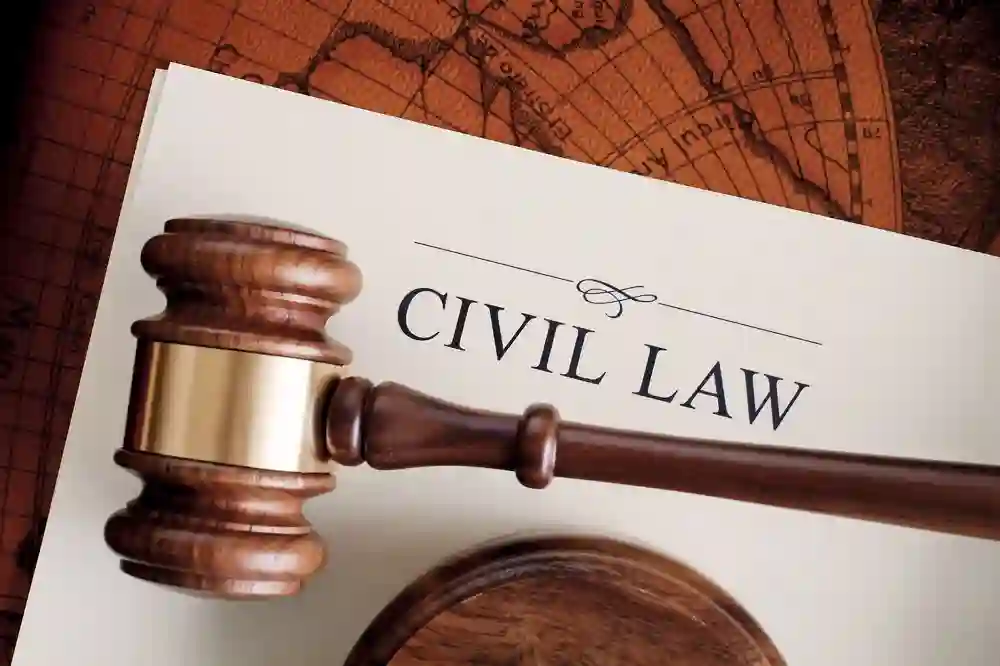What to Expect in a Civil Lawsuit: A Step-by-Step Guide

A civil lawsuit. A lawsuit can feel like wading through a swamp at night—slow, sticky, and you’re not quite sure where you’re headed. I remember the first time I had to deal with one (thankfully, as an observer). It was a mess of paperwork, legal jargon, and a lot of waiting. But here’s the deal: if you’re stepping into this world, you’ve gotta know what you’re getting into. So, let’s break it down. Step by step.
What’s a Civil Lawsuit, Anyway?
Let’s start with the basics. What even is a civil lawsuit? You’d think this is a simple question, but when I first heard the term, my brain screamed, “What kind of civil? Like… civilized? Or… not civil?” Spoiler: it’s the latter.
A civil lawsuit is basically when one person (or entity) sues another for something they believe they’ve been wronged for. It’s like when your neighbor’s tree roots invade your yard (seriously, the audacity). You’re not calling the cops—no, you’re hitting up the court system to sort things out.
The lawsuit could be anything from someone breaking a contract, causing personal injury, or doing something shady with your property. It’s not about locking someone up (like in criminal court), but about getting your issues settled with the legal system—whether that’s through money, or a change in behavior.
Getting the Ball Rolling: Filing a Complaint
Alright, so you’ve been wronged. You’re mad, and you want your justice. The first step in any civil lawsuit? The dreaded complaint. If I had a nickel for every time I heard a friend say, “I gotta file a complaint,” I’d have my own personal lawyer by now.
So, you file the complaint. In it, you’ll explain what happened, who’s involved, and—oh yeah—what you want out of this whole thing. Typically, it’ll be something like money, but sometimes it’s something more specific (like asking someone to stop doing something—hey, it happens).
Once that’s done, a summons goes out. The defendant (that’s the other person) gets this little note that says, “Hey, you’ve been sued.” And then? They have to respond. Not kidding, they have a timeline for this. Miss the deadline? You might win by default. Score!
Serving the Defendant: I Hope You’re Not Shy
Okay, now that you’ve filed the complaint, you’ve got to get that summons to the defendant. It’s like playing a weird game of tag—except this one involves a court and serious consequences if they don’t get the tag.
Serving the defendant is a big deal because, legally speaking, if they don’t get the notice, the whole process is basically null and void. They have to know what they’re being sued for, right? So, you can’t just slip a note under their door and call it a day. You need to follow the rules. Typically, someone—who’s not you—has to hand them the papers. Yeah, it’s a whole thing.
The defendant has a set time to respond. So let’s say they’re just chilling at home when a process server shows up with this fancy paperwork—well, tough luck. The game is on.
The Waiting Game: Discovery Phase
Once everyone’s been served and the official response is in, it’s time for discovery. No, this isn’t some treasure hunt in your backyard. This is when both sides start exchanging evidence—this could mean a lot of digging through old emails, contracts, medical records, and more. A messy, tedious process. Fun fact: I once spent hours in a folder of emails from 2017 just to find one line of text. It’s… painful.
Here’s what goes down in discovery:
- Interrogatories: These are like written questions. You send them over to the other party, and they have to answer. Kinda like homework, but more serious.
- Depositions: Think of this like an interview, but with a lawyer across the table. It’s all on record, under oath. And if you get caught lying? Yikes.
- Requests for Documents: You can ask for all kinds of records that might support your case. You need those to prove your point.
The goal? Find out where the other side stands, see their evidence, and maybe—just maybe—discover something that completely changes the game. Oh, and don’t be surprised if this process takes forever. It’s like a legal version of watching grass grow.
Pre-Trial Motions: The Lawyer’s Toolbox
Okay, so we’ve got some evidence. Now comes the part where your lawyer gets to play with all sorts of legal tools. Pre-trial motions can set the tone of the whole case. A good lawyer will use these motions to shape the battle ahead.
For example, there’s something called a motion to dismiss. This is like when someone calls BS on your case from the start. Basically, they’re saying your claim isn’t even worth hearing. If they’re right, it’s game over before it even begins.
Another popular one is the motion for summary judgment. If one side thinks the other doesn’t have a leg to stand on, they’ll ask the judge to rule in their favor before the trial even starts. Sometimes it works. Sometimes it doesn’t. Either way, it’s all part of the fun.
Settlement Before the Storm
Here’s the kicker. A lot of civil lawsuits never make it to trial. Yep, you heard that right. The dreaded courtroom drama? Nah, it’s often avoided by a little thing called a settlement. Both sides might reach an agreement on their own terms, outside of court. So, no need for a jury, no messy drama.
It’s kinda like when two siblings argue over a TV remote. Instead of a fist fight, they call a truce and agree on watching the same movie. Settling is efficient, but it doesn’t always feel as victorious. Still, it gets the job done.
The Trial Itself: Showtime
Let’s say your case makes it to trial. Buckle up, because this is where it gets real. And I’m not talking “reality TV” fake drama—this is the real deal. Here’s how it usually goes:
- Jury Selection: Picture it: a room full of potential jurors. Both sides get to ask questions to see if anyone might be biased. It’s like trying to find a group of people who’ll agree on pineapple pizza.
- Opening Statements: Think of this like the trailer for the movie you’re about to watch. The lawyers give their pitch to the jury, setting the stage.
- Presenting Evidence: Now comes the nitty-gritty. The witnesses take the stand. Documents are shown. Testimonies are given. It’s basically like an episode of Law & Order, except you’re in the courtroom, not the TV screen.
- Closing Arguments: Both sides try to sell their case one last time, wrapping it all up for the jury to digest.
Once all that’s done, the jury deliberates (or the judge in a bench trial), and the verdict is handed down. “Guilty” or “Not guilty”? Nah, this isn’t criminal court—this is about whether the defendant owes money or needs to do something to make things right.
After the Verdict: What’s Next?
So, let’s say the trial’s over, and a verdict is reached. Now what? Well, if you’re the losing side, you have a chance to file post-trial motions or even appeal the decision.
It’s like getting an F on a test, but you ask the teacher if you can do extra credit. Sometimes it works. Other times? It’s like waiting for a miracle. My own appeal process took so long, I was halfway through my next relationship before I heard back.
Wrapping It Up: Navigating the Wild Ride
Dealing with a civil lawsuit isn’t for the faint of heart. But knowing what to expect? That’s half the battle. If you’re looking to go the legal route, understand that it’ll be a slog—plenty of waiting, paperwork, and probably some frustration along the way. But hey, if you’ve got a strong case, a good lawyer, and a little patience, it might just be worth it.
And remember: if things get too complicated, there’s always that option of calling it a day and settling. Might not feel as glamorous as courtroom drama, but sometimes, it’s exactly what you need. Trust me, I’ve seen it firsthand.
Good luck. And seriously, don’t forget to hire a lawyer.







